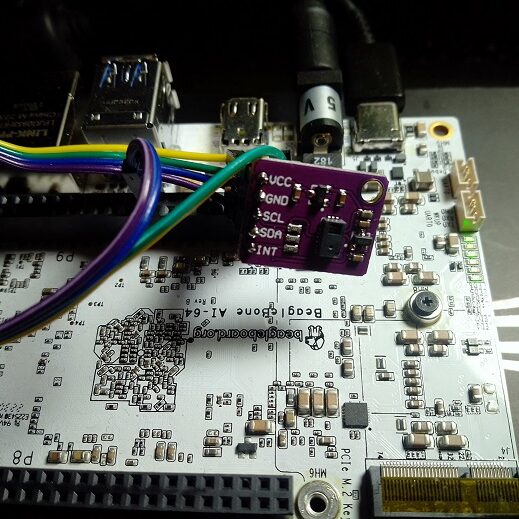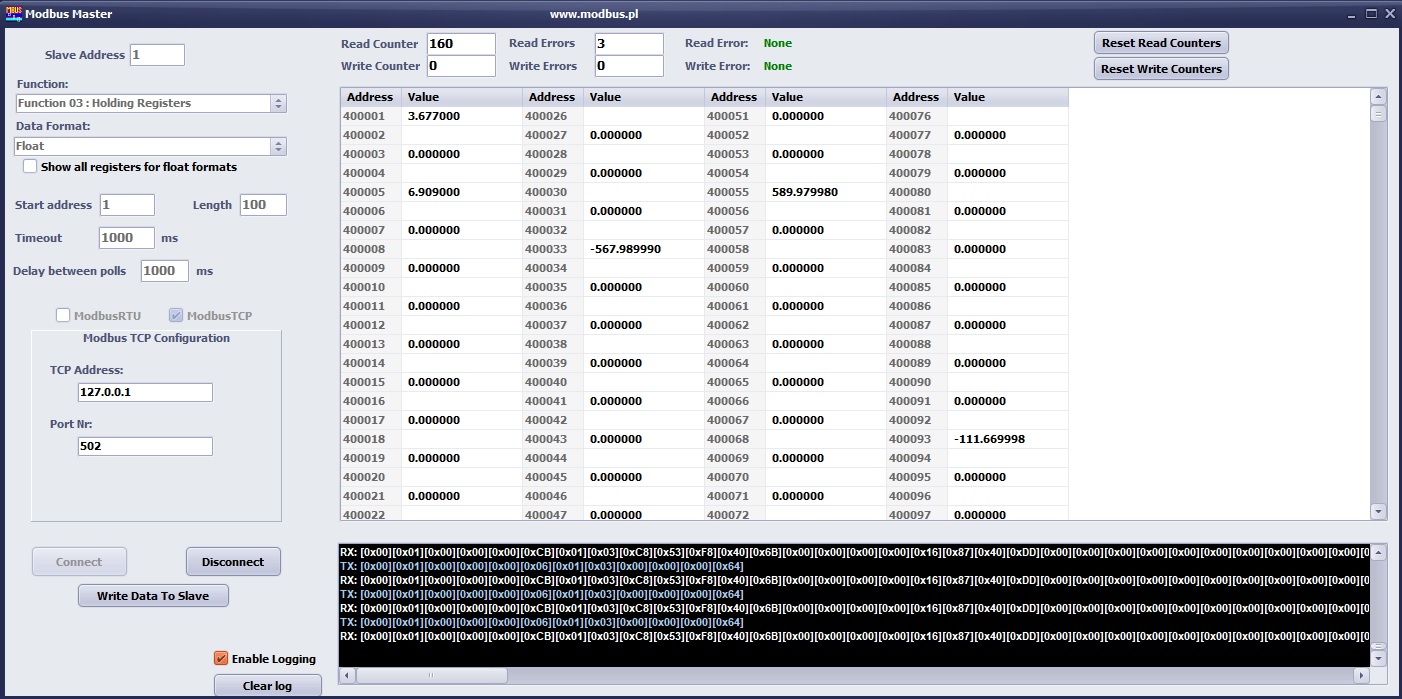Modbus Master application supports Modbus RTU and Modbus TCP/IP
Modbus protocol, despite the passage of time (was developed in the Modicon company in 1980) continues to be standard in most industrial controllers (PLC) and is widely used in industrial automation systems.
Modbus is a communication protocol used for transmitting data between electronic devices. In a Modbus network, there are two types of devices: Modbus Master and Modbus Slave.
The Modbus Master is a device that initiates the communication and sends requests to the Modbus Slaves. It can request data, write data, or perform other operations on the slave devices. The Modbus Master is responsible for controlling the flow of communication in the network and for managing the timing and sequence of requests.
In practical applications, the Modbus Master is typically a supervisory control and data acquisition (SCADA) system, a programmable logic controller (PLC), or a computer-based control system. The Modbus Master communicates with the Modbus Slave devices using a serial or Ethernet connection.
The Modbus Master sends requests to the Modbus Slaves in the form of Modbus function codes. Each function code corresponds to a particular type of operation, such as reading or writing data. The Modbus Master sends the function code along with other information, such as the address of the slave device and the register or memory location to be accessed.
When the Modbus Slave receives a request from the Modbus Master, it processes the request and sends back a response. The response includes the requested data or a status code indicating whether the operation was successful or not.
In summary, the Modbus Master is the device that initiates the communication and controls the flow of data in a Modbus network. It sends requests to the Modbus Slaves and receives responses from them. The Modbus Master is typically a SCADA system, PLC, or computer-based control system.
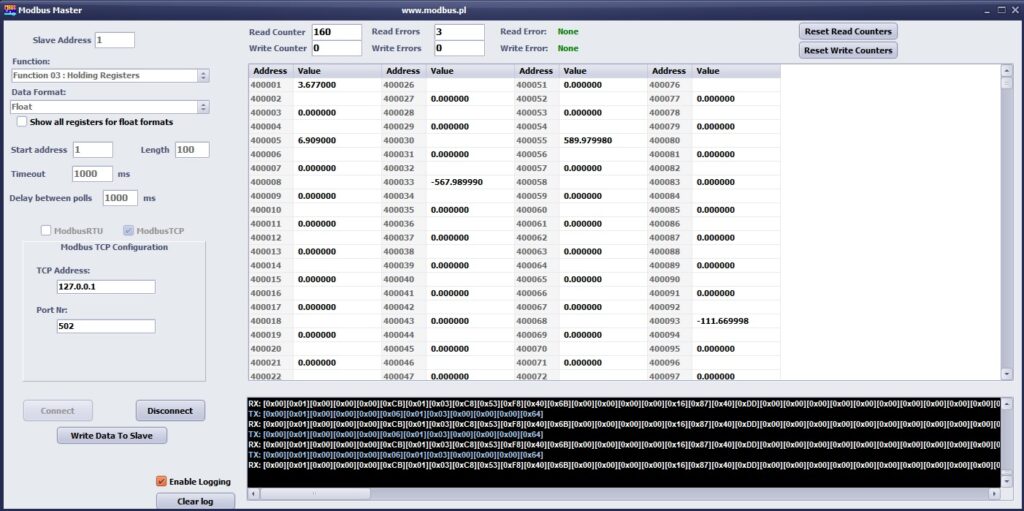
There are many variants of Modbus protocols:
Modbus ASCII
Modbus RTU
Modbus TCP/IP
Modbus over TCP/IP
Modbus over UDP
Modbus Master supports Modbus RTU and Modbus TCP/IP.
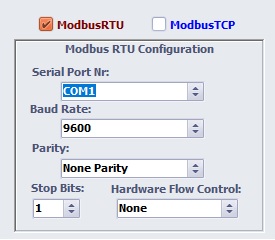
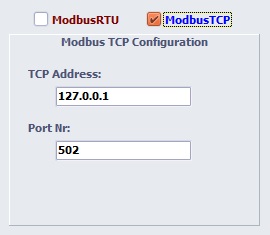
Modbus Master supports following functions (RTU and TCP/IP)
Read Coils (Function Code 01): This function is used to read the status of discrete outputs (coils) in a Modbus device. The request contains the starting address of the coil to be read and the number of coils to be read. The response contains the status of the requested coils.
Read Discrete Inputs (Function Code 02): This function is used to read the status of discrete inputs in a Modbus device. The request contains the starting address of the input to be read and the number of inputs to be read. The response contains the status of the requested inputs.
Read Holding Registers (Function Code 03): This function is used to read the values of holding registers in a Modbus device. The request contains the starting address of the register to be read and the number of registers to be read. The response contains the values of the requested registers.
Read Input Registers (Function Code 04): This function is used to read the values of input registers in a Modbus device. The request contains the starting address of the register to be read and the number of registers to be read. The response contains the values of the requested registers.
Write Single Coil (Function Code 05): This function is used to write a single output (coil) in a Modbus device. The request contains the address of the coil to be written and the value to be written. The response contains the address of the written coil and the value that was written.
Write Single Register (Function Code 06): This function is used to write a single holding register in a Modbus device. The request contains the address of the register to be written and the value to be written. The response contains the address of the written register and the value that was written.
Write Multiple Coils (Function Code 15): This function is used to write multiple outputs (coils) in a Modbus device. The request contains the starting address of the coils to be written, the number of coils to be written, and the values to be written. The response contains the starting address of the written coils and the number of coils that were written.
Write Multiple Registers (Function Code 16): This function is used to write multiple holding registers in a Modbus device. The request contains the starting address of the registers to be written, the number of registers to be written, and the values to be written. The response contains the starting address of the written registers and the number of registers that were written.
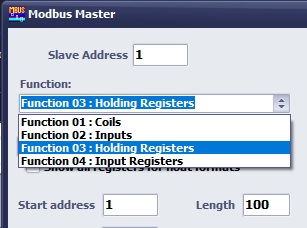
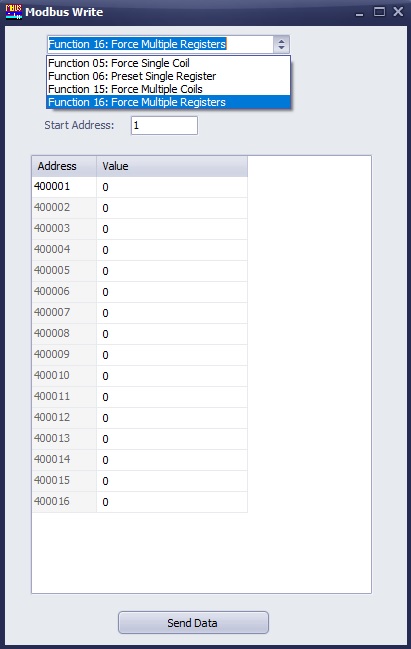
The data can be in many formats (hex, bin, float, int).
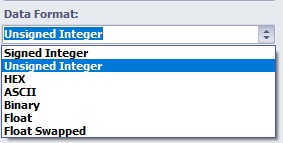
You can see also the raw frames.

Windows 32 bit and 64 bit version
